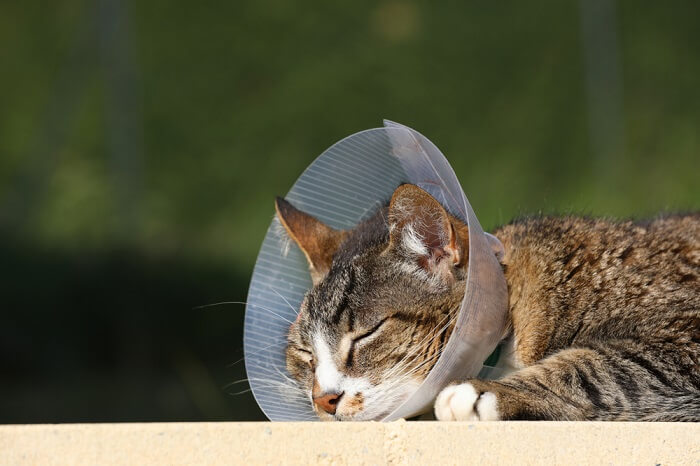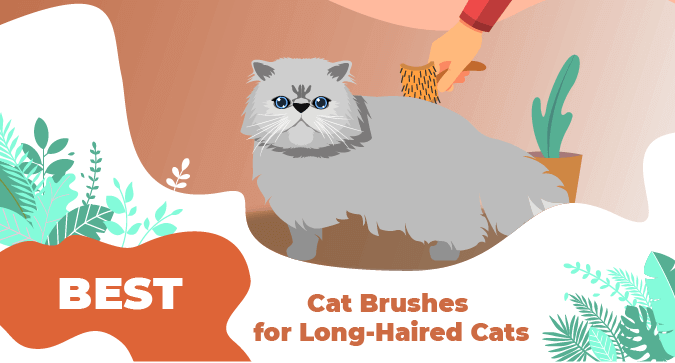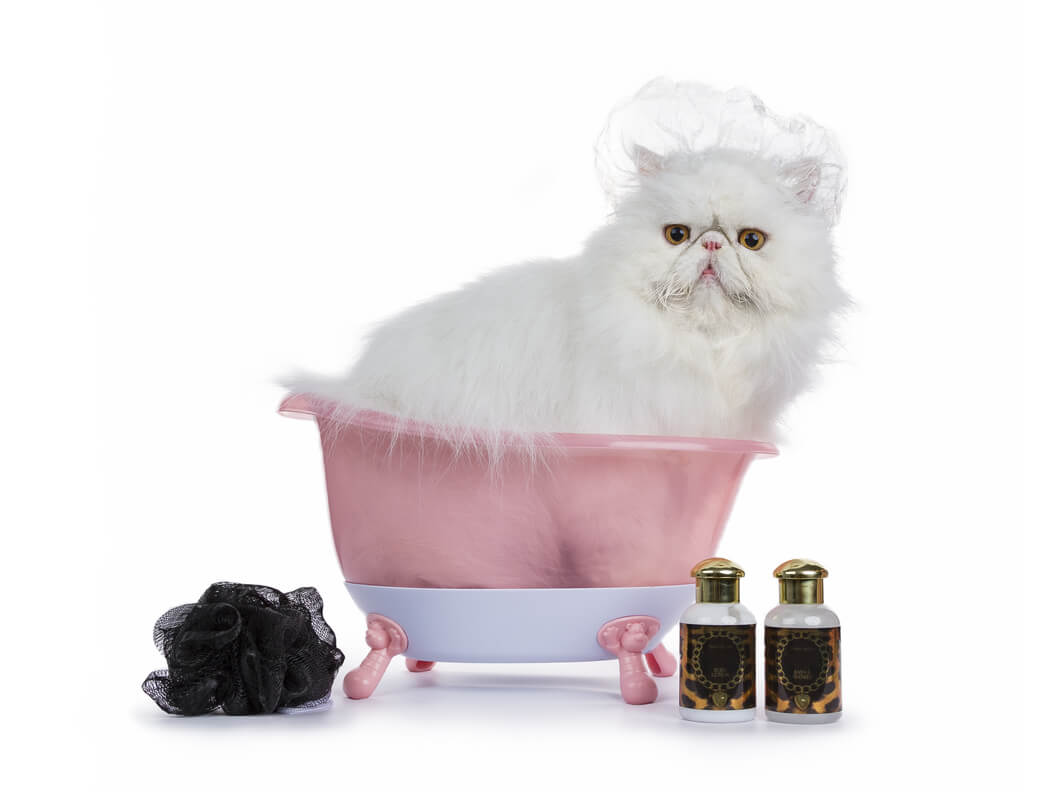Abscesses In Cats: Causes, Symptoms & Treatment
This page contains affiliate links. We may earn money or products from the companies mentioned in this post through our independently chosen links, which earn us a commission.
Abscesses are painful localized wounds that cats can develop as a result of poor dental hygiene, trauma, and injury. The abscess forms when bacteria enters deep tissue and establishes an infection. Over time, the infection will grow, increases in pressure, and erode the overlying skin.
What Causes Abscesses?
There are two types of abscess in cats, dental and skin abscesses. One of the most common causes is a bite from another animal. The bite injury introduces bacteria into the wound, the wound becomes infected, and, depending upon the bacteria involved and how deep the bite is, an abscess can result.
Dental abscesses form when bacteria invade the root of a damaged or fractured tooth.
Certain bacterial species are often involved in an abscess which include:
- Pus-forming bacteria like Staphylococcus, Escherichia coli, certain Streptococcus species, Pseudomonas, Mycoplasma, Pasteurella multocida, Corynebacterium, Actinomyces, Nocardia, and Bartonella
- Bacteria that can only live and grow in the absence of oxygen including Bacteroides, Clostridium, and Fusobacterium
When your cat gets bitten, he receives small punctures in the skin which quickly seal over trapping bacteria from the other cat’s mouth under the skin. Usually there is no indication of a bite. However, as the bacteria under the skin multiplies, and tissues around the bite wound become infected, pain and swelling occur.
After a few days, an abscess or pus pocket, may develop. With severe abscesses, the skin is lifted off the underlying tissues, causing a loss of blood supply and necrosis or death of areas of the skin. These areas of skin then come off, leaving large open wounds. Sometimes an abscess will rupture, but then reform, if there is not good drainage.
Bite wounds are the main cause of transmission of Feline Immunodeficiency Virus ( FIV), the Feline Aids Virus. If your cat has been known to have had a fight, a blood test for FIV is recommended 3 to 6 months after.
What To Look For?
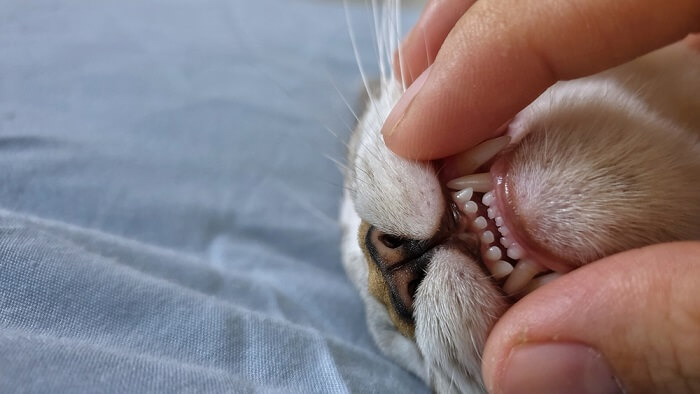
Pain is the most obvious sign that a cat has an abscess developing and the area maybe swollen. Often cats will not allow you to touch them on the bite area. Your cat may become listless, have a fever and refuse to eat.
There are several stages of abscess healing that you can identify. Here is what you can expect the process to look like:
- Fluid filled swelling – If the abscess has not yet ruptured, the cat will most likely be feverish which means you will see listlessness and appetite loss. Depending on how long the swelling has been present, the skin around the area may be very tender and fragile. A small scab or puncture from a tooth mark that caused the abscess may still be visible on the surface of the swelling.
- Smelly, draining sore – The fluid pocket will eventually rupture and release a foul smelling pus. During this time the fever may break because the rotten tissue is able to drain. You may not see the sore but you may smell it.
- A wound that is not healing – Some cats will lick the fur right off of the wound, making the area more visible. It will most likely look raw and may no longer be actively draining pus. Sometimes the overlying skin on the abscess area is very fragile and easily tears away leaving a large raw area.
- Tender area – Sometimes the wound is buried in the fur so deep you may not see it. You may only find a tender area and or notice the smelly odor of the infection.
The bottom line is the abscess will likely rupture on its own. It must rupture to begin the healing, so abscesses that do not rupture naturally will need to be lanced by your vet and flushed out.
Again, cats will usually lick around their wound causing the hair around the abscess to part and make the abscess more visible. The abscess will look raw and will at some point stop draining pus leaving a raw, fragile spot.
How To Treat An Abscess?
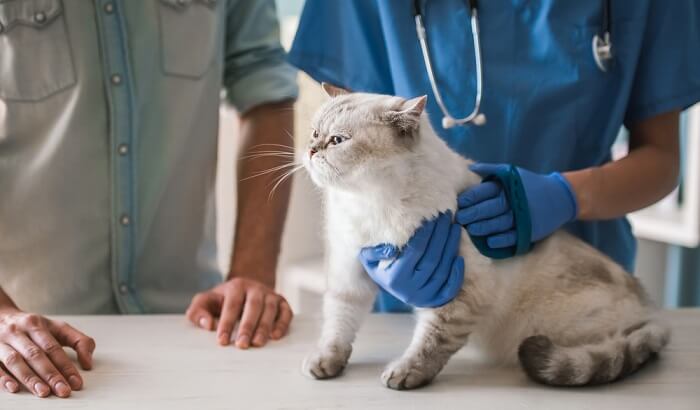
Abscess treatment depends on the severity and location of the infection. Most abscesses are treated on an outpatient basis by your vet, rather than in the hospital. The goal is to remove the pocket of pus, either by surgical removal, or by draining and flushing.
If a foreign object is the cause of the abscess, it is critical to ensure that it has been completely removed or the abscess will return. Here are some of the ways an abscess can be treated depending on the severity:
- Warm compresses are helpful for the first few days when you notice pus draining. The heat helps liquify diseased tissues so that they can drain. Use a warm (not hot) washcloth and apply it to the wound for 5-10 minutes once or twice a day or as instructed by your cats vet.
- If the abscess has not ruptured, it will need to be lanced. Once the abscess is open, it will need to be flushed clean of infected debris. If the abscess is large or especially painful, sedation may be required to accomplish this through your vet.
- Older abscesses may have enough dead overlying tissue to require surgical trimming and stitches. Some abscesses are large enough to require an indwelling rubber drain to assist with removal of the pus. You may have to flush the drain with disinfectant at home.
- Minor surgery is sometimes needed in the management of feline abscesses. The goal is to establish and maintain drainage, remove the focus of the infection, and to remove any foreign objects if needed. Your vet must first consider the health status of the cat, the area of the abscess, and the temperament of your cat when deciding on a treatment plan. The hair surrounding the abscess can be clipped widely and the entire cat should be evaluated for puncture sites and other wounds. Once the area of the abscess is aseptically prepared, the vet makes a stab incision into a selected soft or fluctuant section of the abscess. The abscess is drained and copiously flushed using sterile saline. Debridement may be required depending on the integrity of the tissue.
- The cat will very likely need antibiotics at home. If so, you will need to administer either pills or liquid medication (let your veterinarian know if you have a preference). Also, there is an injectable antibiotic which lasts 2 weeks and may be given by your vet, eliminating the need for oral medication at home. Your veterinarian will likely recommend one of these treatments in addition to cleaning and flushing out the wound.
Your cat should be restricted from outdoor activity during his recovery. If the abscess was caused by a cat fight, then restricting your cat from going outside indefinitely will decrease the risk of another abscess occurring.
Abscess Treatment Cost
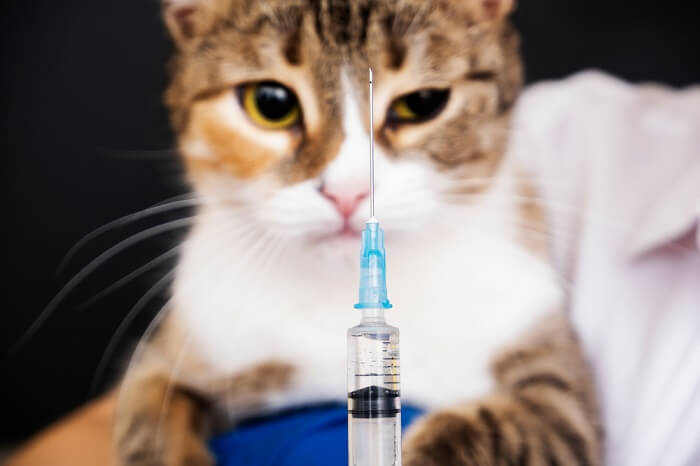
Depending on the severity of your cat’s abscess, lancing and flushing the abscess and some antibiotics, may be all that is required. This type of procedure may cost you between $100 and $400 depending on where you live.
If your cat’s abscess is not caught at an early enough stage, the abscess will continue to swell and the infection will begin to do significant damage to the tissue beneath the skin. The abscess may spontaneously rupture, leaking a foul-smelling pus on the fur. This type of wounds usually need surgical management in addition to antibiotics.
Under anesthesia, the wound is trimmed of the dead flesh, and the infection is flushed out with copious amounts if disinfectant solution. If the wound is large, sutures may be required to partially close it. Typically, a small portion of the wound is left open to allow continued drainage for a couple of days. In severe cases, a temporary drain needs to be placed at the bottom part of the wound to allow any future pus or fluid to escape. Drains are removed after 2 or 3 days and the wound is allowed to continue healing on its own. This type of surgery can cost around $400-$700.
If your cat is prone to abscess or is still young, it maybe a good idea to invest in pet insurance to cover some of the costs.
How To Prevent Cat Abscess?
The best way to prevent your cat from getting a cat fight related abscess, is to neuter him which will reduce the desire to fight over female cats. Although, it would be best to keep your cat indoors to prevent fighting all together.
For dental related abscesses, good oral hygiene is the key to prevention. This means brushing your cat’s teeth frequently, giving him dental treats, and eliminating harmful dental habits such as chewing on hard objects or foods.

